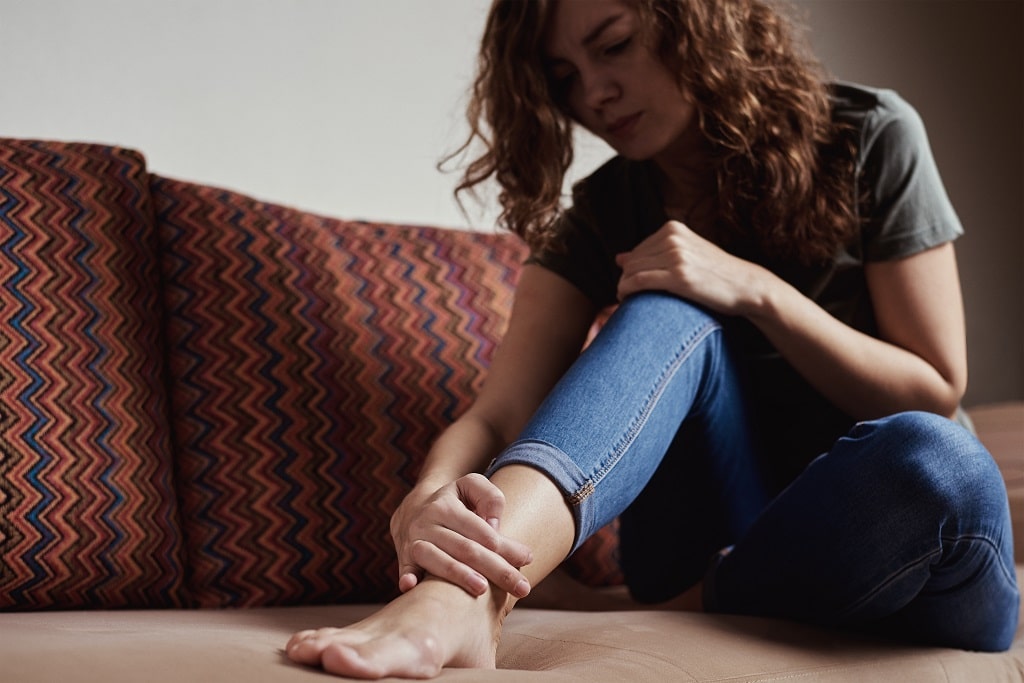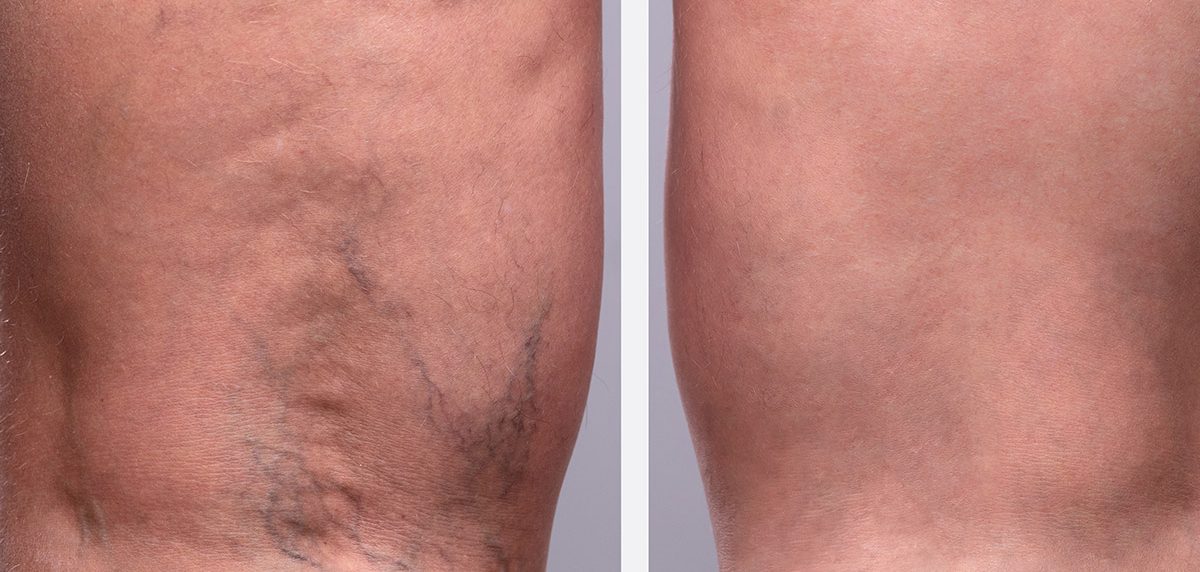Learn more about spider vein injections
Those small, web-like veins on your legs, feet, and ankles are known as spider veins. Not only are they unsightly but they also are a symptom of unhealthy veins.
If you suffer from spider veins, you may have heard that you can get injections for spider veins to make them go away. That procedure is known as sclerotherapy.
In this blog post, we’ll discuss what spider veins are, what sclerotherapy is and how it works, and answer some common questions about sclerotherapy.
What are spider veins?
Spider veins are tiny veins that are visible just below the surface of the skin. They are usually red, blue, or purple in color, and can often be seen on the legs or face. They look a bit like a spider web, thus the name.
Spider veins occur when blood pools in the veins, causing them to become larger and more visible. Spider veins are caused by a variety of factors, including heredity, pregnancy, and weight gain. They are also more common in people who stand or sit for long periods of time.
What is sclerotherapy?
Sclerotherapy is a medical procedure used to treat spider veins. During this procedure, a doctor will inject a solution into the veins, which will cause them to collapse and disappear.
Sclerotherapy is a very safe and fast procedure. Most procedures take around an hour and patients can then go about their day as normal.
How long do spider vein injections last?
After sclerotherapy treatments or injections for spider veins, most people will find that their small spider veins disappear fairly quickly. Medium-sized spider veins may take 3-6 weeks to disappear, while larger veins may take as long as 3-4 months to disappear. Some people may need more than one treatment session to achieve desired results.
What do they inject to get rid of spider veins?
The most common solution used for sclerotherapy is a salt solution called sodium chloride. This solution works by irritating the walls of the veins, causing them to collapse and disappear.
Other solutions that may be used include:
- Polidocanol: This is a man-made alcohol that is often used in Europe for sclerotherapy. It is less likely to cause side effects than sodium chloride.
- Sodium tetradecyl sulfate: This is another salt solution that is sometimes used for sclerotherapy. It can be more irritating than sodium chloride, but is also more effective at treating larger spider veins.
- Foam sclerosants: These are solutions that have been mixed with air to create a foam. Foam sclerosants are often used to treat large spider veins.
What is the best treatment for spider veins?
There is no one “best” treatment for spider veins. The best treatment for you will depend on a variety of factors, including the size and location of your spider veins, your medical history, and your personal preferences.
Sclerotherapy is often considered the first line of treatment for spider veins because it is safe, fast, and effective. If you have larger spider veins, you may require different treatment, such as surgery.
If you are considering sclerotherapy for your spider veins, be sure to consult with a medical professional.
How many injections do you need for spider veins?
The number of injections you will need will depend on the size and location of your spider veins. Most people will require 3-10 injections for each treatment session.
What are the dangers of sclerotherapy?
Sclerotherapy is generally a safe and well-tolerated procedure. The most common side effect is bruising, which usually resolves itself within a few weeks. Other potential side effects include:
- Temporary itching, burning, or stinging at the injection site
- Mild swelling
- Redness
- Discoloration of the skin
In very rare cases, sclerotherapy can cause more serious side effects, such as blood clots or allergic reactions. Be sure to consult with a medical professional prior to treatment to discuss potential risks.
Do spider veins come back after sclerotherapy?
In some cases, spider veins may return after sclerotherapy. However, the vast majority of people will find that their spider veins do not return after treatment.
Spider Vein On Ankles And Feet Specialists At Kafri Wellness Clinic
If you are concerned about spider veins on your feet, ankles, or legs, it’s worth seeing a vein specialist for a consultation.
If your condition warrants it, we may recommend considering having a procedure done, such as sclerotherapy, to cure the problem. If you are considering such a procedure, contact Kafri Wellness Clinic to schedule an evaluation and get more information.
At Kafri Wellness Clinic, we have over 25+ years of experience working with patients to address vein issues. We also take into consideration a cardiovascular approach to your treatment to give you as much insight into your health as possible.
If you’d like to schedule a consultation to learn how we can help you, please contact us today!

